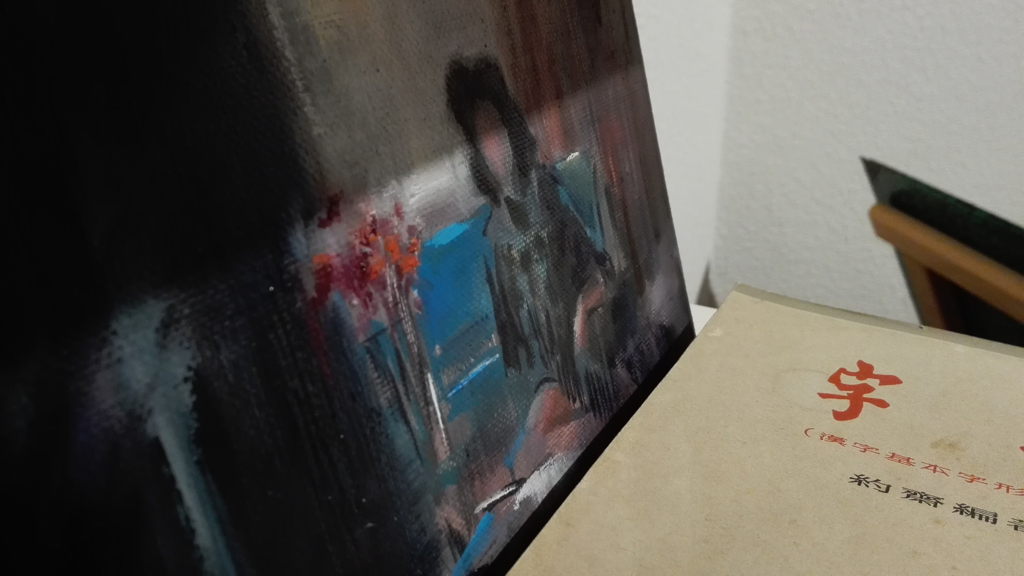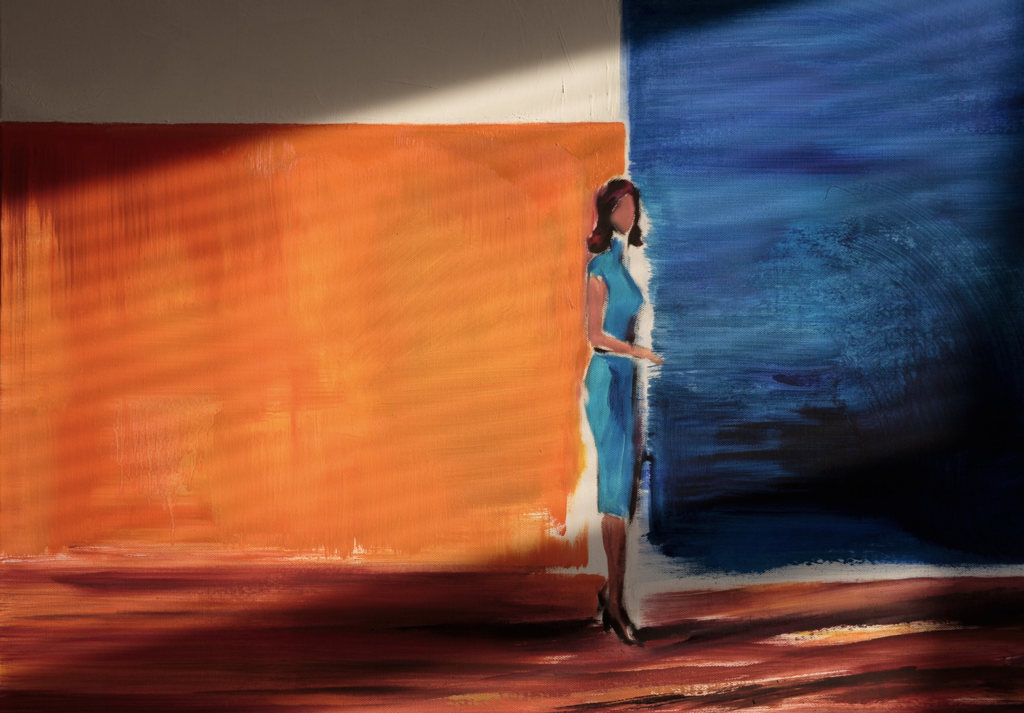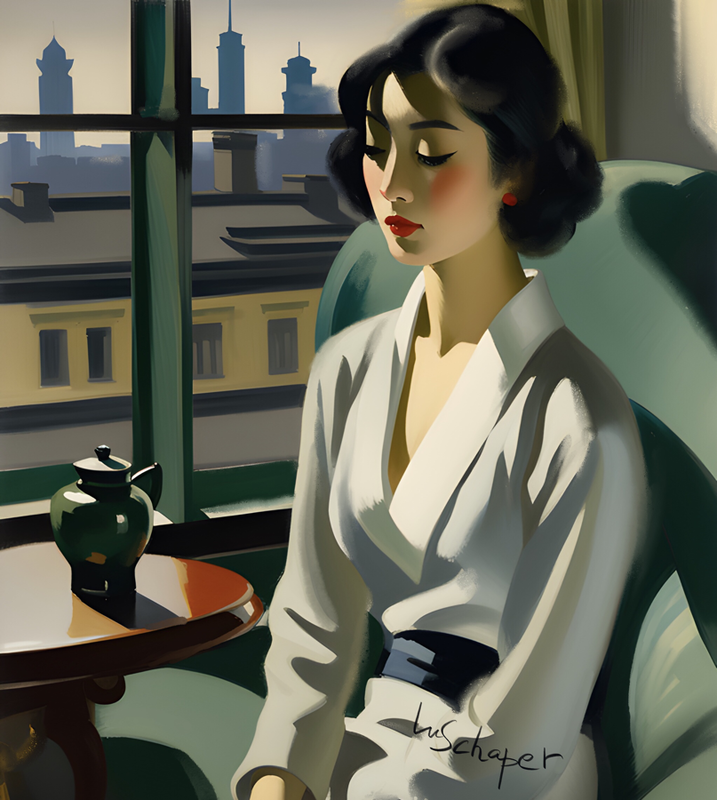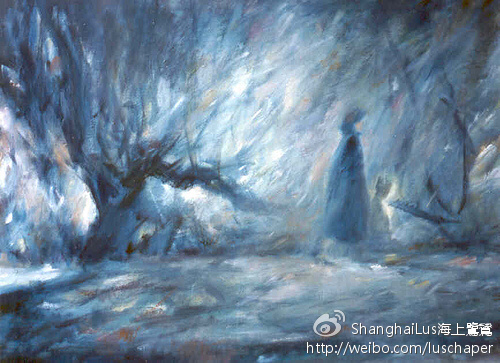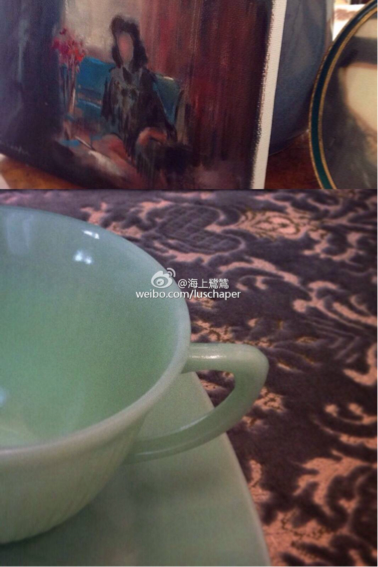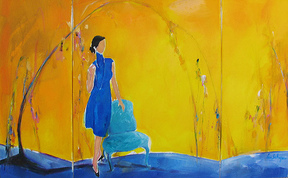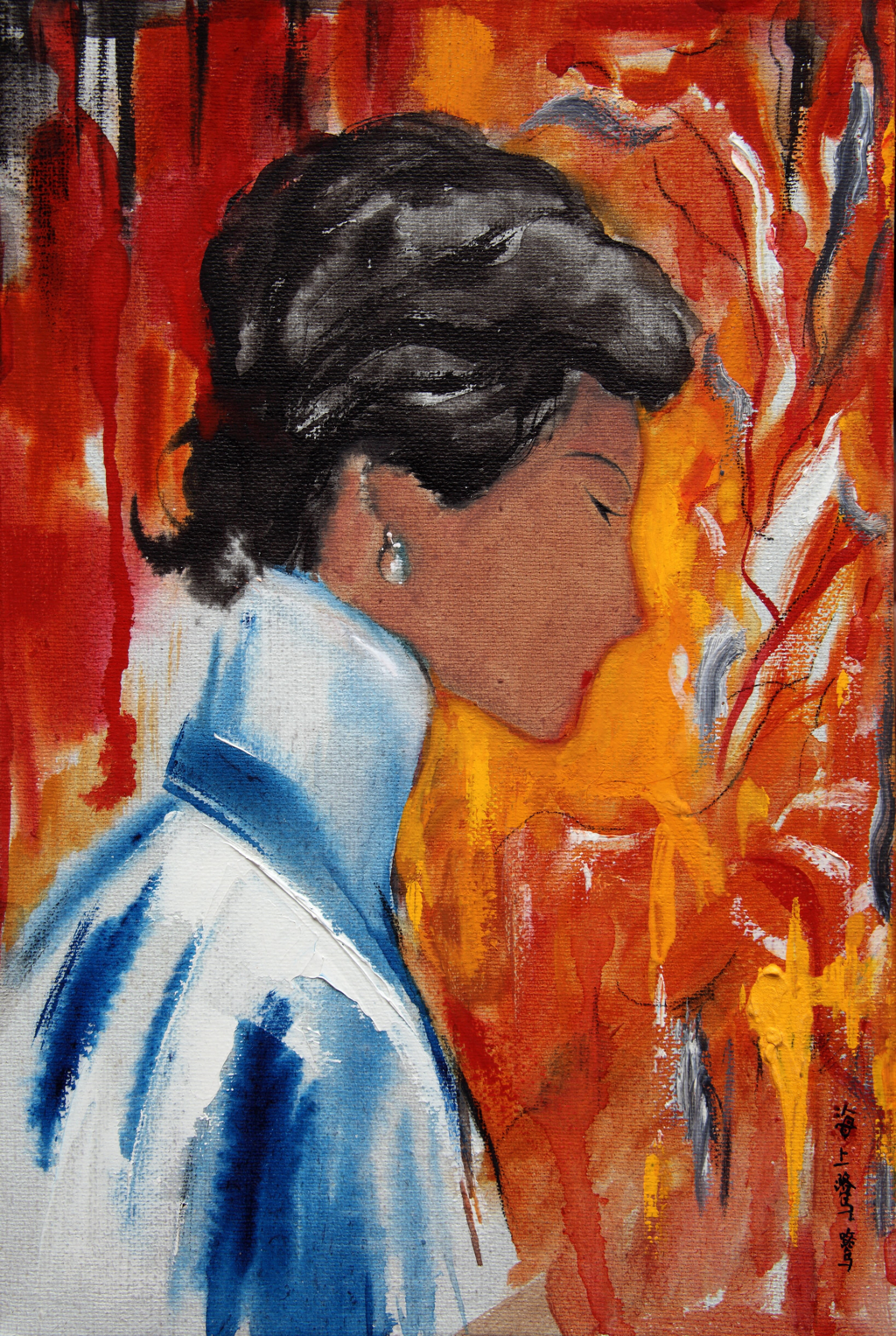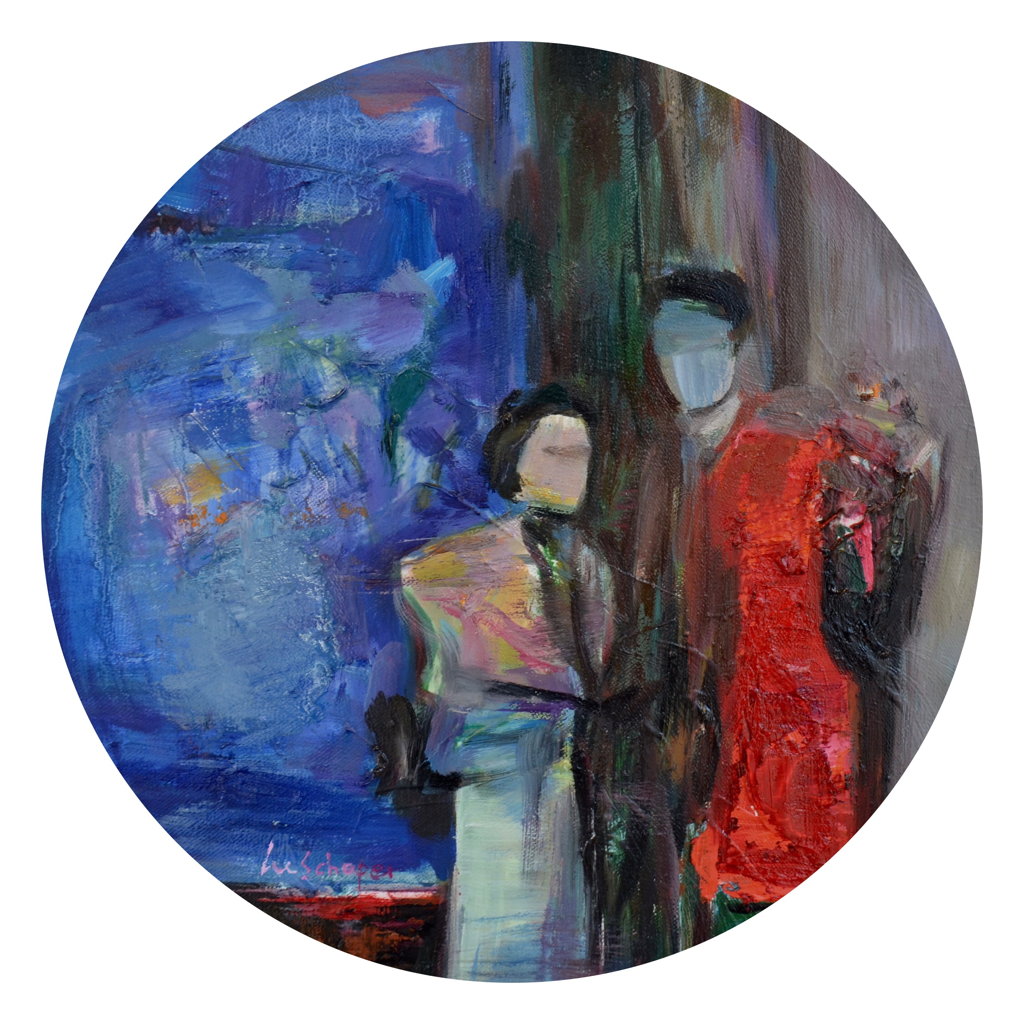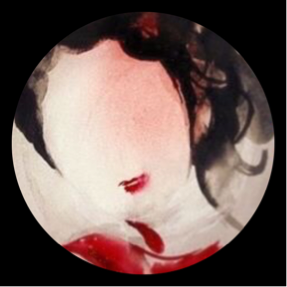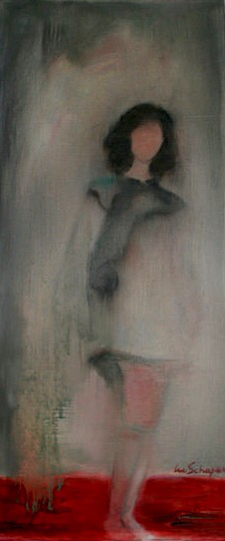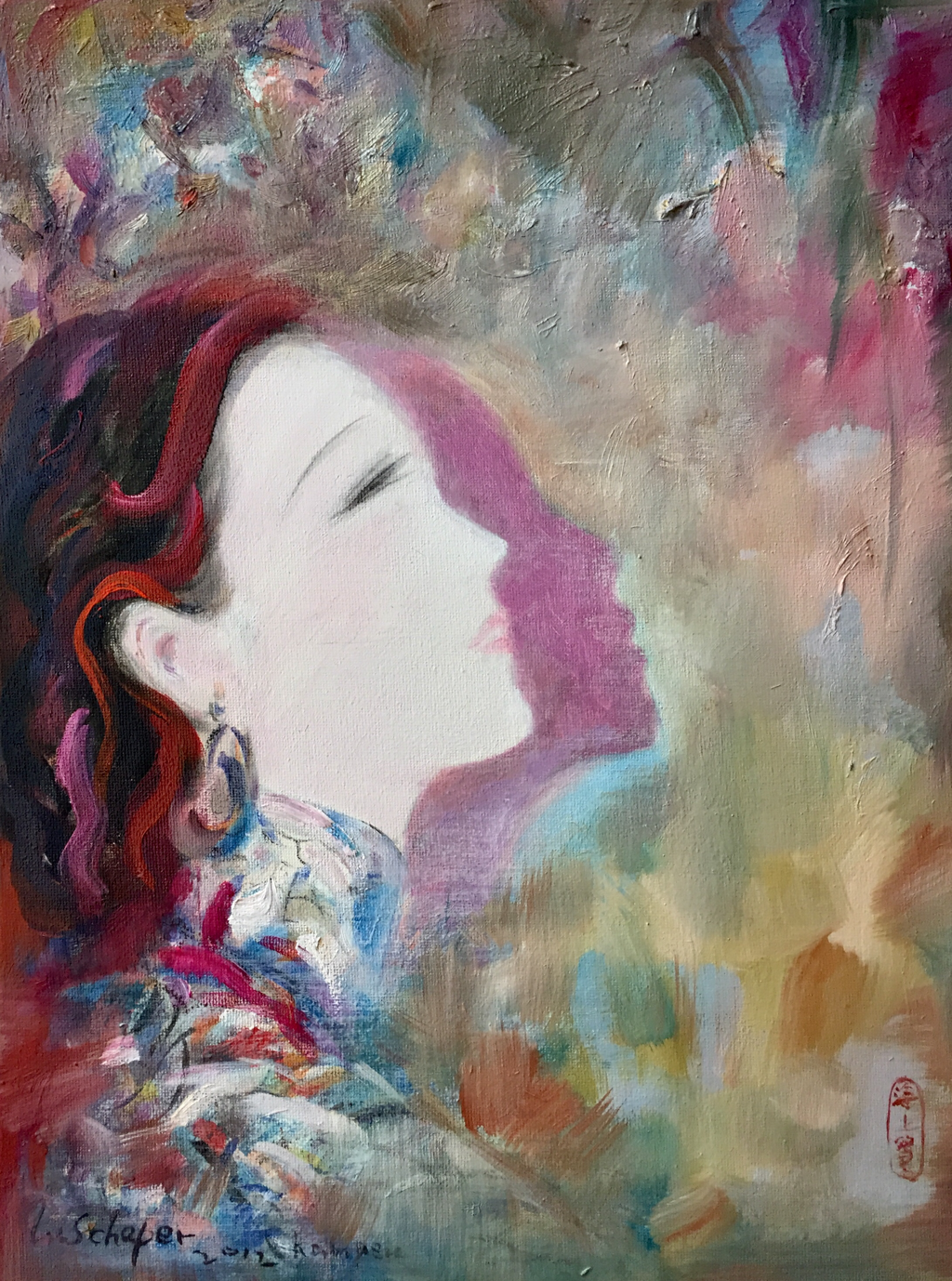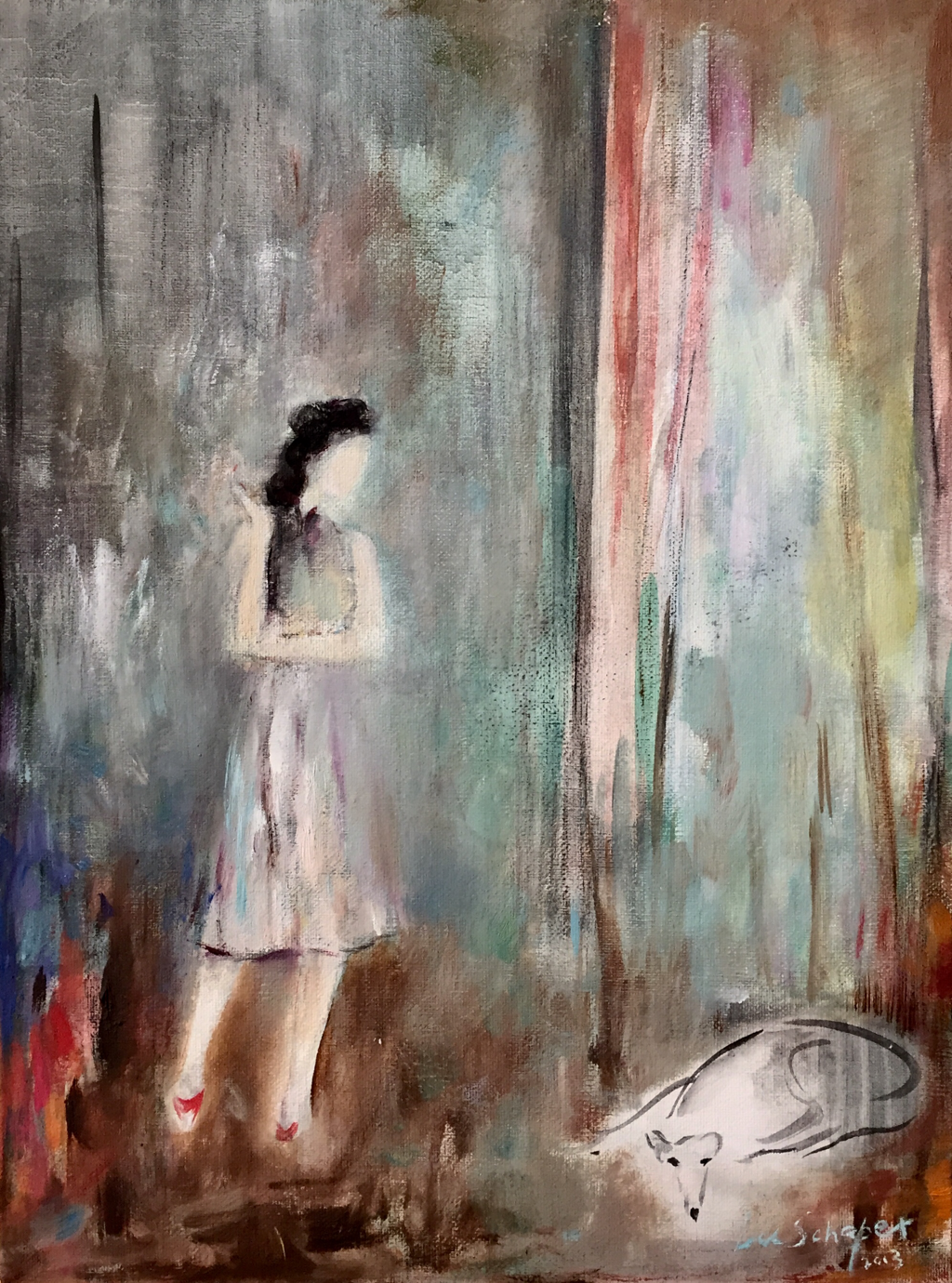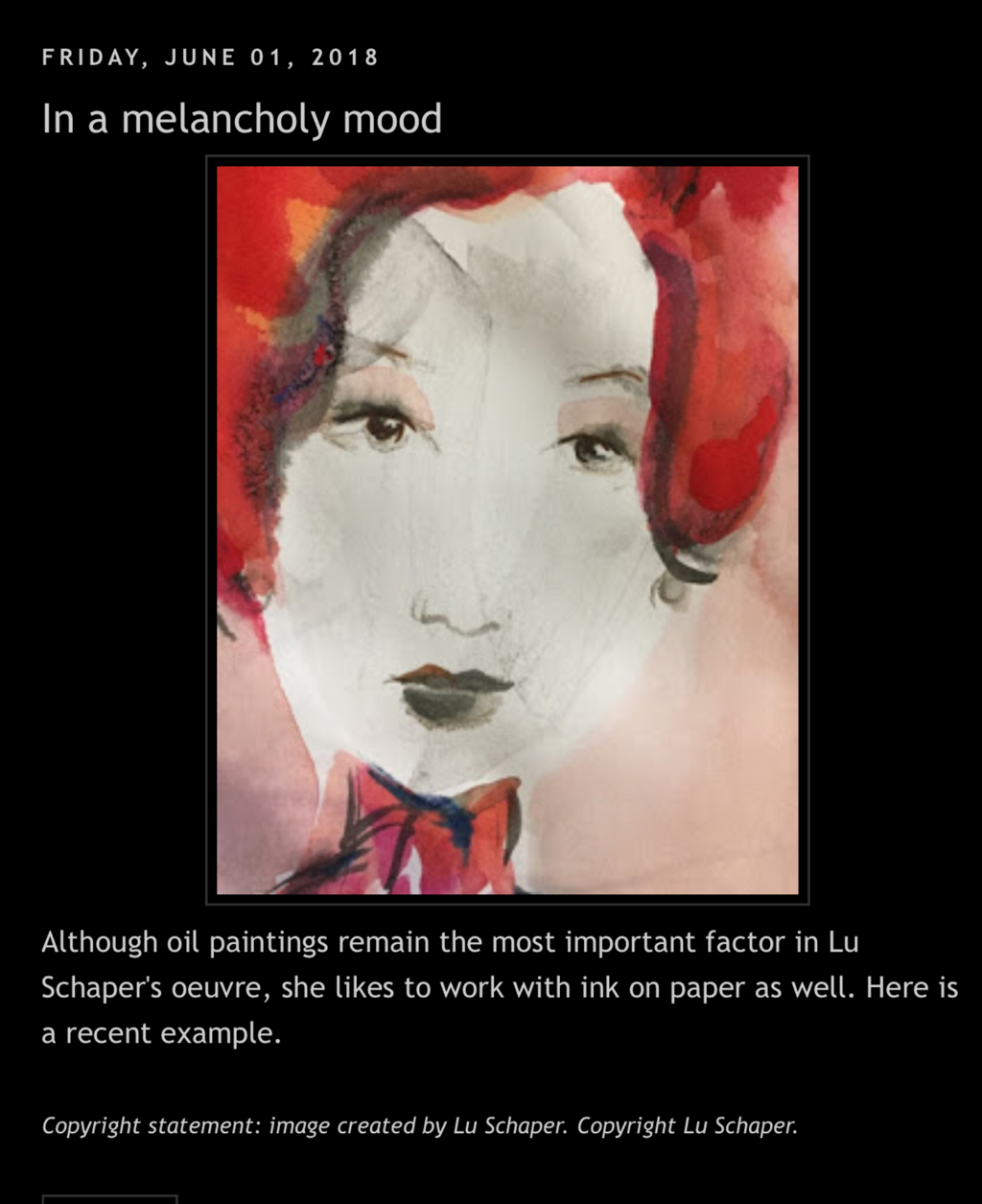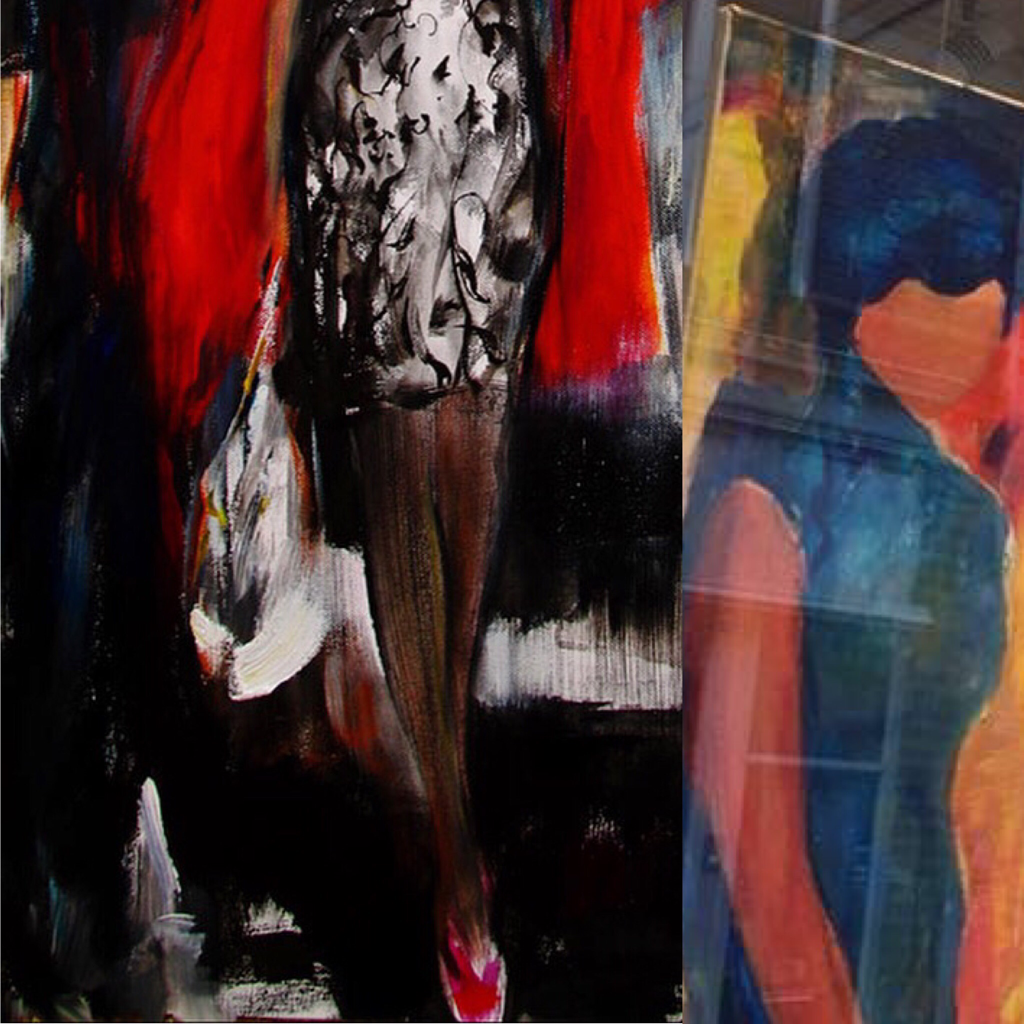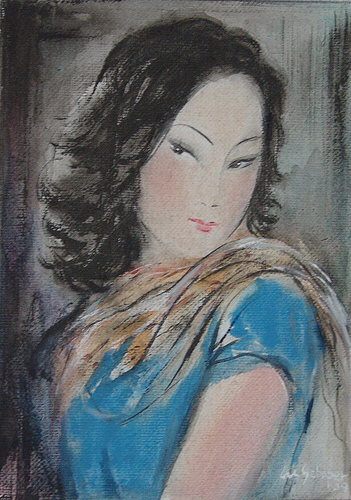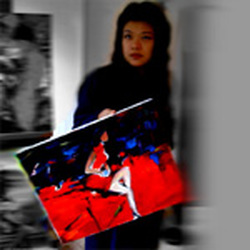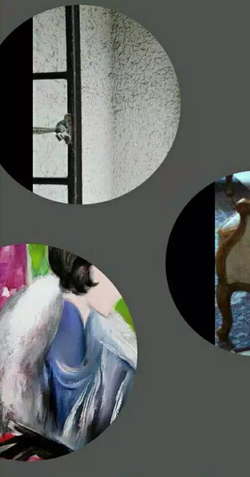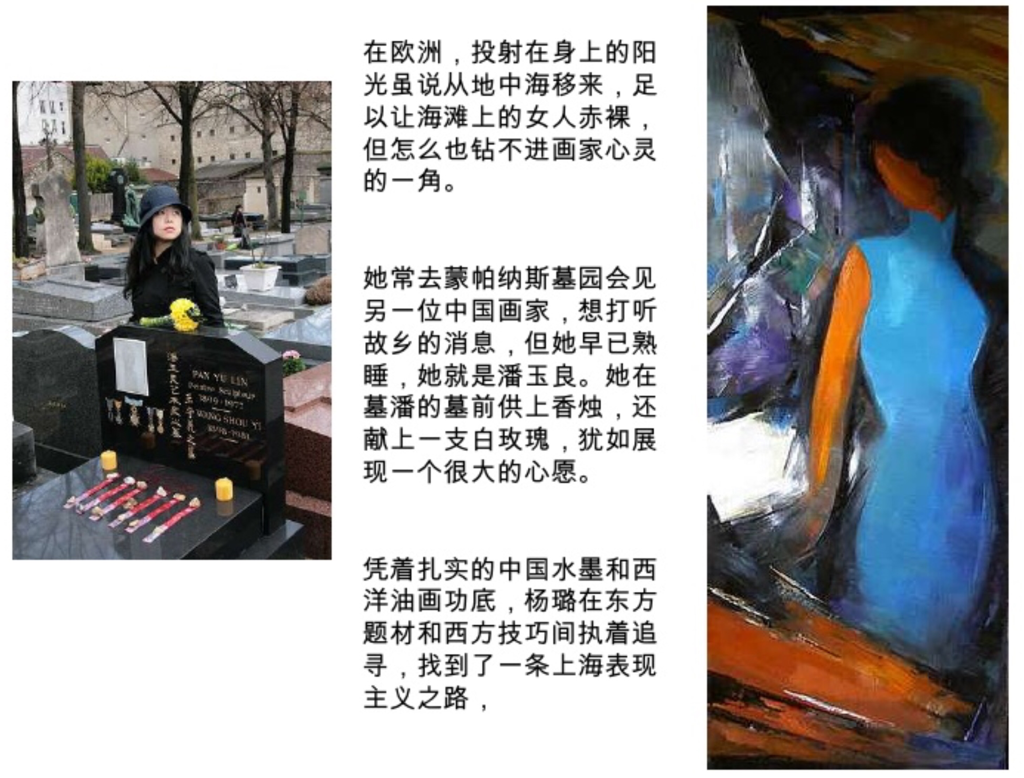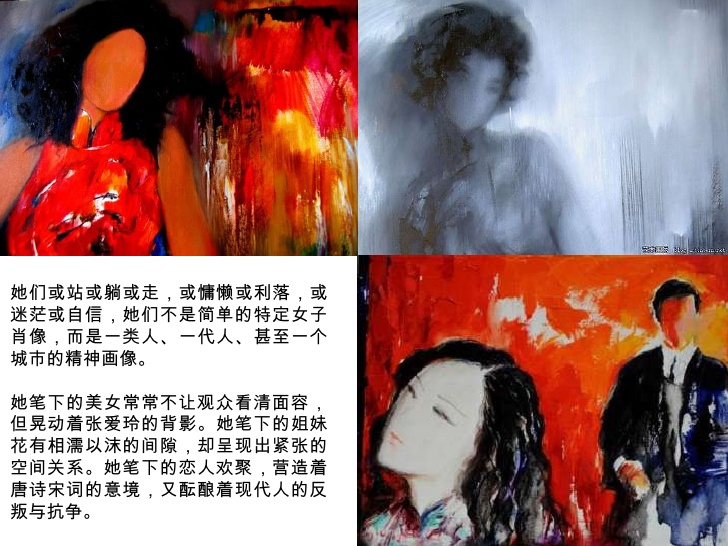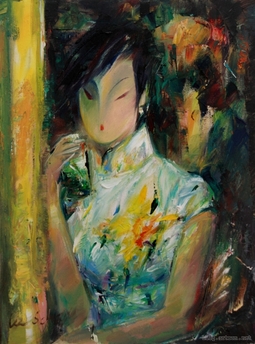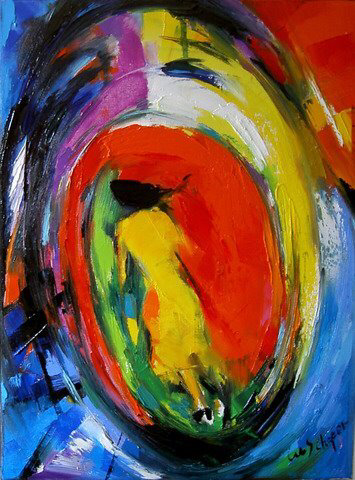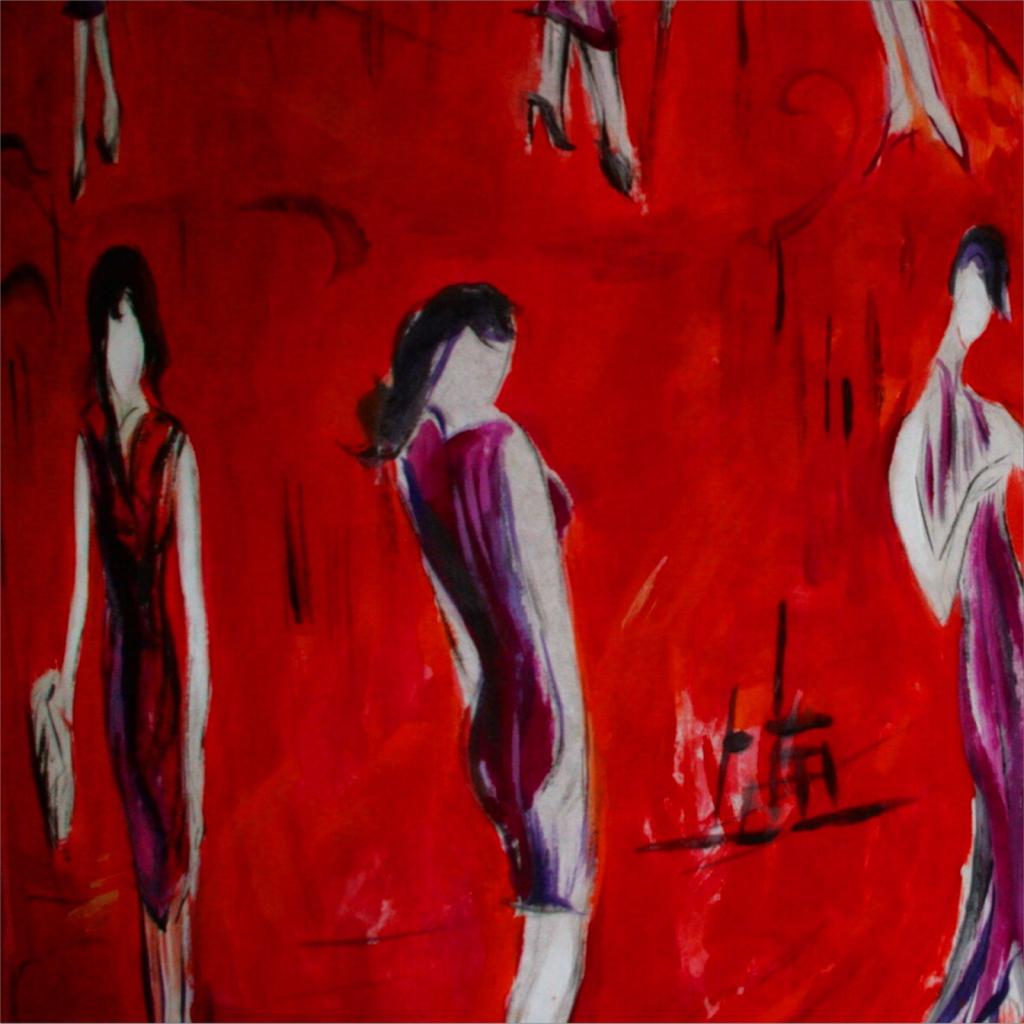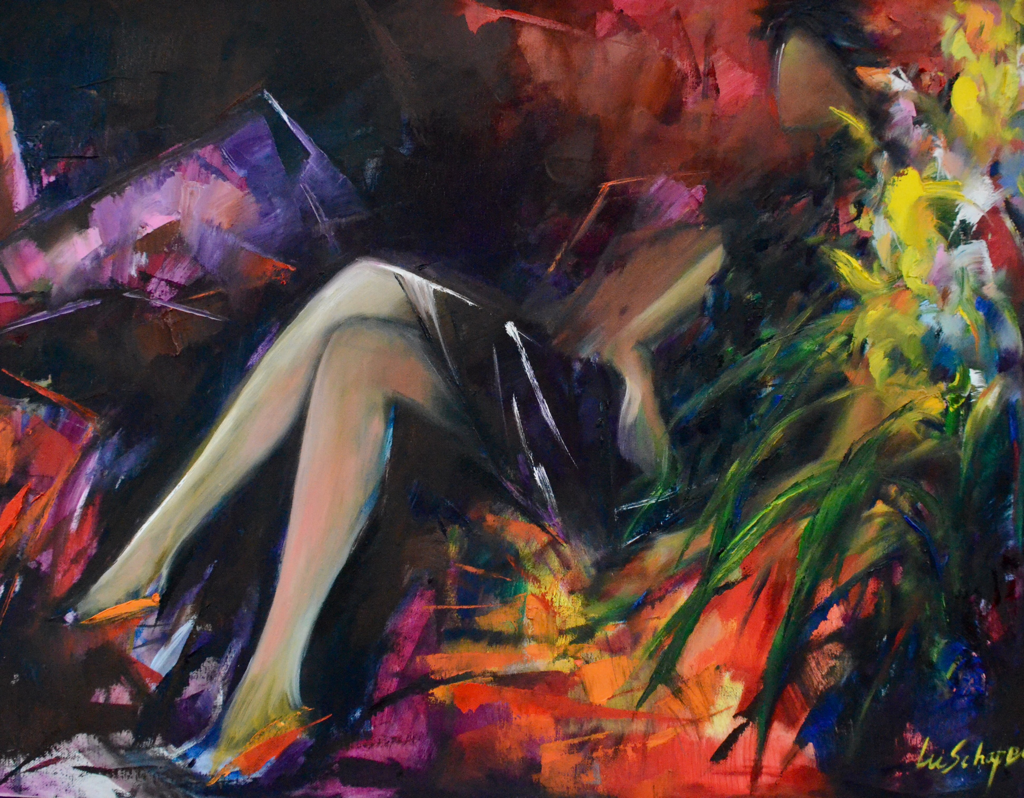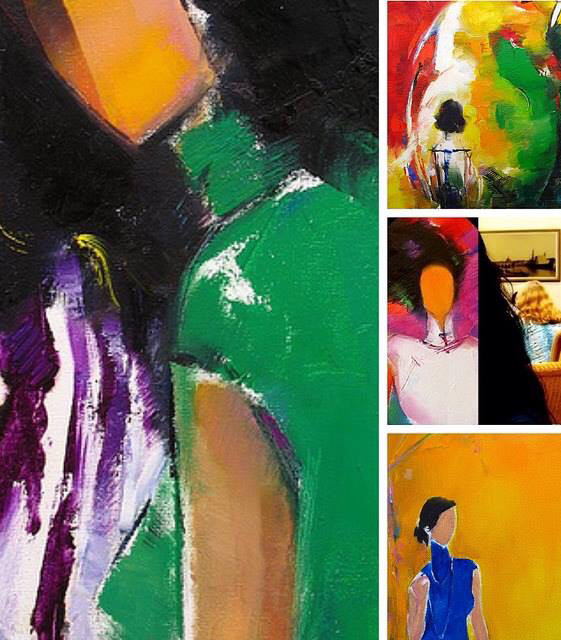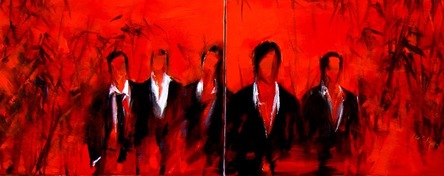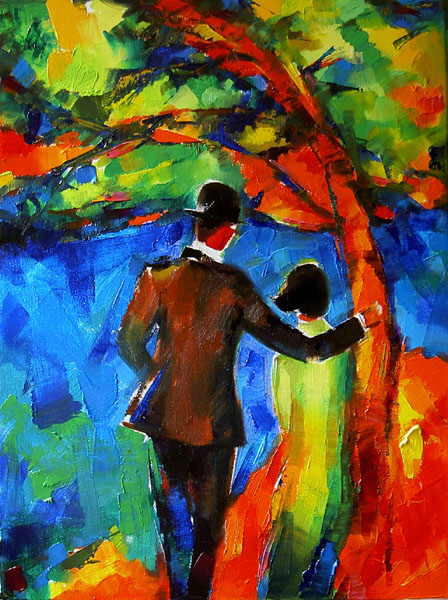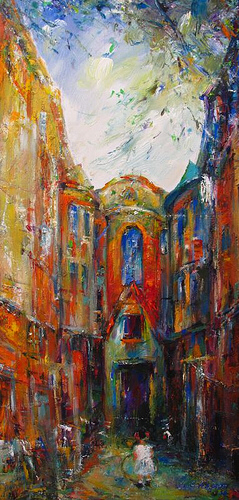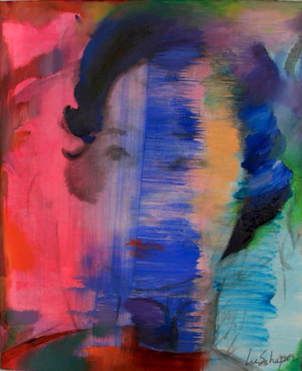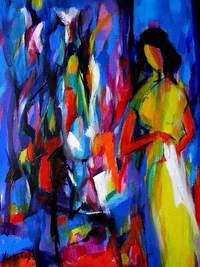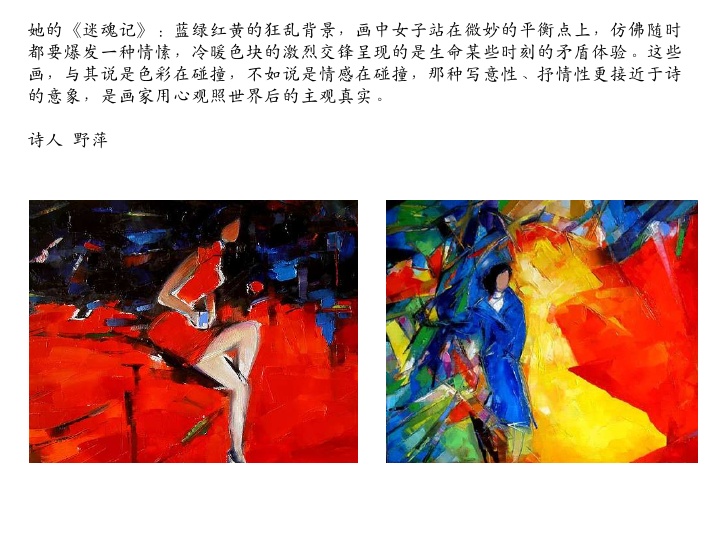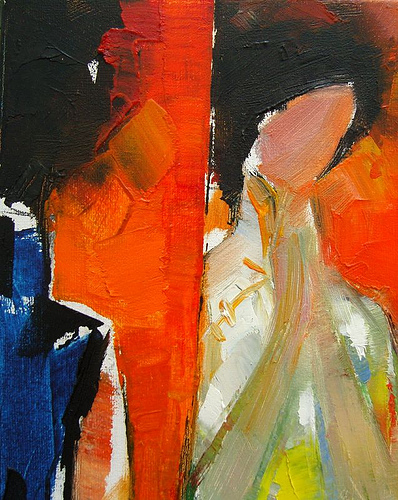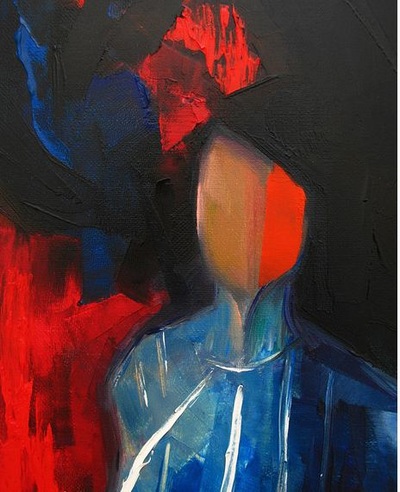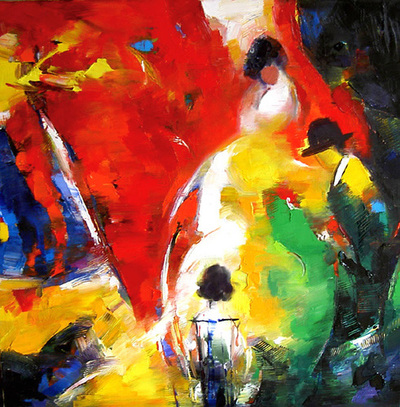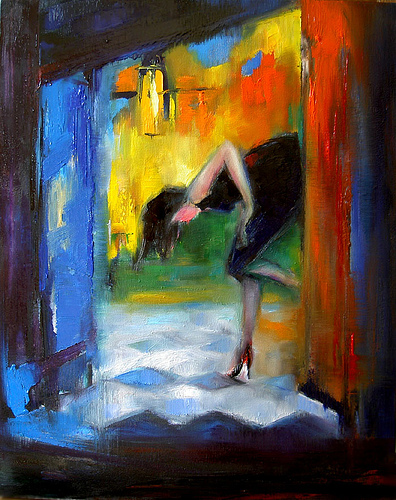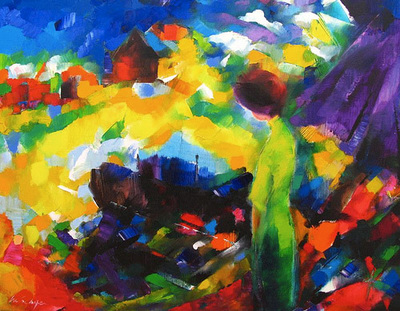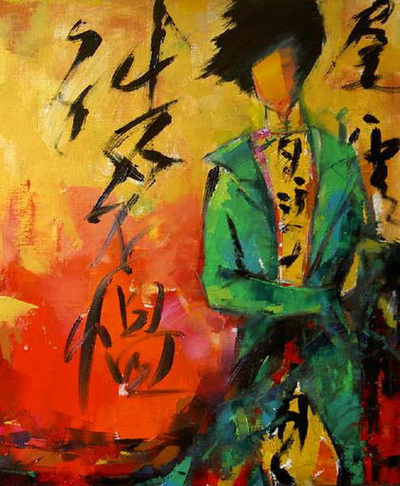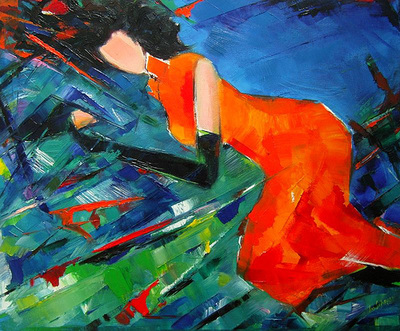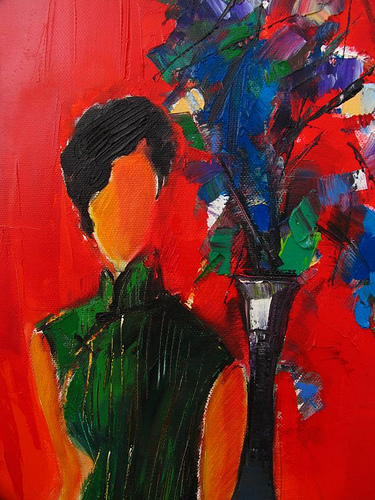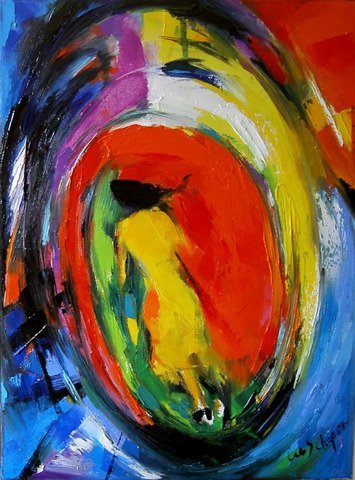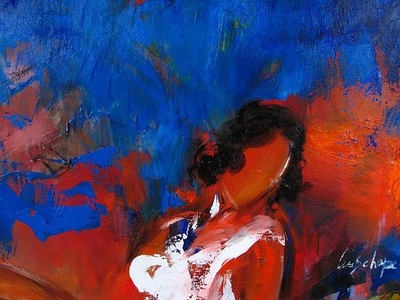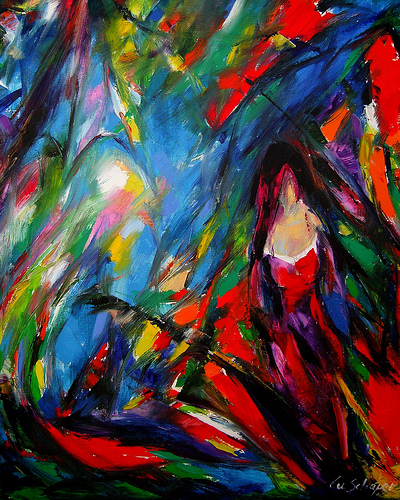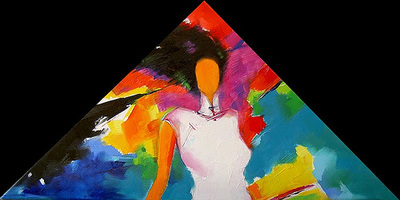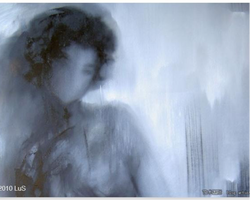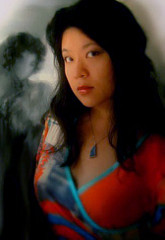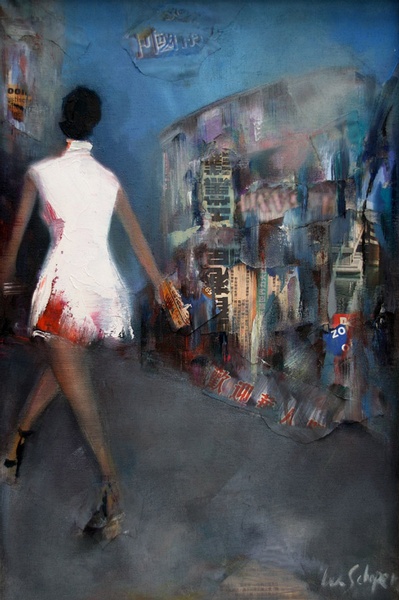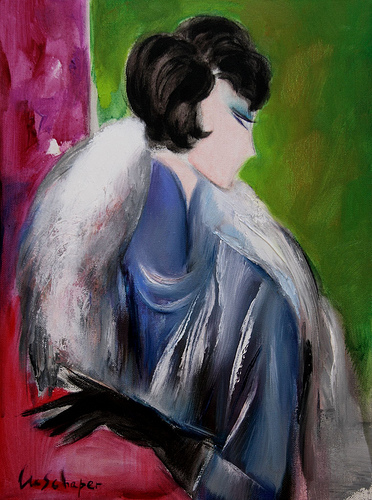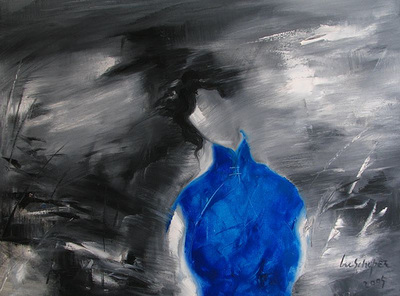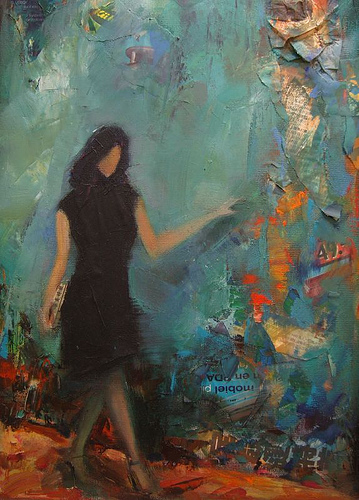|
往返在上海弄堂与欧洲弄堂,画心中的上海,一种熟悉又未知的情境再现。上海是一个越远离越斑斓的神奇大都会,当时一心远离的寻常却成了多年后最眷恋的故乡。
|
生长于老上海市中心,上海中西混合的氛围与建筑形态形成了她青少年时代的记忆,在往后欧洲居住的岁月中不断出现在她的作品中,欧洲对于老建筑的珍惜与维护与故乡上海的高速发展充满了巨大的对比,她把海派文化融合在绘画语言中,充满了对上海以往气息美与创伤的感怀。
在上海长大的旅法女画家杨璐,笔名海上鹭鸶。上海是鹭鸶身体和灵魂的故乡,也是她永不枯竭的灵感源泉,她一次次从自己的画里返乡,以隐去面目的旗袍女子来表达内心感受,这些女性形象传承自中国现代绘画导师林风眠,却更具上海城市文化的气质。她们或站或躺或走,或慵懒或利落,或迷茫或自信,她们不是简单的特定女子肖像,而是一类人、一代人、甚至一个城市的精神画像。 鹭鸶的乡愁是彩色的。乡愁是鹭鸶的创作动力和灵感泉眼,她笔下的美女常常不让观众看清面容,但晃动着张爱玲的背影。她笔下的恋人欢聚,营造着唐诗宋词的意境,又酝酿着现代人的反叛与抗争。 鹭鸶选择上海女性题材作为新海派画的探索实践,既是海派文化基因的自然显现,又是一个海外游子必然的情感诉求。她的画作既有浓艳的西洋画色彩,又蕴含了中国写意画的含蓄和轻描淡写。一方面,隐去面部神情的旗袍女人与简捷环境构成的图式,可以看出画家“高级而通俗”的创作理念;另一方面,鹭鹭作品的抽象性,使图像离开具像直抵内心体验与感知的“造像”,人物与环境统统具有象征性。陈逸飞和陈丹青也都是上海人,也都受过西方油画传统的的洗礼,然而他们的画更多地体现了古典主义的写实风格。而鹭鸶的画不同,她大胆运用法国画家马蒂斯的色彩、风格――既打破了西方传统的绘画概念,又恰当地表现了东方人独特的风情。正如她自己说:“中国的魂魄,欧洲的风”。 鹭鸶的画有一种奇丽的瑰异,这种瑰异让人在“上海女性”的镜像前迷失。无论褒还是贬,上海女性的历史和现实始终拥有最高的关注度。我正是在她――一个新海派的艺术家身上,读到了上海女性的一种恒久姿态:特立独行。 说不尽浮生若梦,海上女子的风情。 |
|
张爱玲有段文字 “气味总是暂时,所以气味是小趣味, 而颜色有了就在那里, 使人安心,不像音乐, 音乐永远是离开了它自己到别处去, 到哪里似乎谁都不确定, 而且才到就已经过去了, 跟着又是寻寻觅觅, 冷冷清清.”
|
My way of painting has changed over the years, influenced by European expressionists and cubists, but with a distinctive Shanghainese soul in the selection of themes. 他们继续走路,
柳原又道:“鬼使神差地, 我们倒真的恋爱起来了!” 流苏道:“你早就说过你爱我,”柳原笑道:“那不算,我们那时候太忙着谈恋爱了,哪里还有工夫恋爱?” By 张爱玲 |
Shanghai images, especially the elegant women of the twenties and thirties in their cheongsams, often appear in my art.........
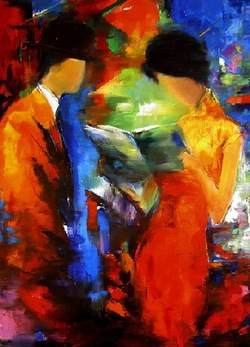
As a Shanghainese in Europe, it was natural and part of myself, that my art would continue to have Shanghainese themes in it. Especially as the increased distance in time and space from the town where I grew up made me reappreciate the beauty of Shanghai. When I lived there as a child, one of my strongest impressions was walking through the elegant French area, looking at the European style buildings from the thirties, and wondering about the stories behind them. When I left Shanghai, the city was rapidly changing into just another modern metropole, and I thought my feelings for this city would diminish quickly. However, from the distance of Europe I found out that you can never forget the feelings for your home town, be they good or bad. I have the feeling I only now fully understand Shanghai, and that it will always be alive in me. In Europe, I am finally able to turn these strong inner feelings about Shanghai into my art.
In the past, Shanghai was called the Paris of the Orient. For Paris, the important word here is Orient, for Shanghai the important word here is Paris. Both elegant cities, fashion capitals, with high lifestyle, always like being on a stage. Both cities in which the people have to face the real life problems, still have their dreams, but have the typical large-city mentality of keeping a distance. Both cities in which people grow up in a city culture. They see pictures of the sea long before they actually see the sea, they read about love before experiencing love. The real experience always follows the imagined one. In this sense, there is very little difference between East and West.
In the past, Shanghai was called the Paris of the Orient. For Paris, the important word here is Orient, for Shanghai the important word here is Paris. Both elegant cities, fashion capitals, with high lifestyle, always like being on a stage. Both cities in which the people have to face the real life problems, still have their dreams, but have the typical large-city mentality of keeping a distance. Both cities in which people grow up in a city culture. They see pictures of the sea long before they actually see the sea, they read about love before experiencing love. The real experience always follows the imagined one. In this sense, there is very little difference between East and West.
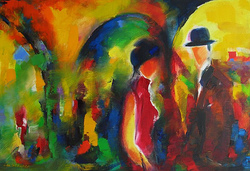
In my current art style, all these influences and emotions come together. The emotions and memories of Shanghai, and the influences of movies and music. The amalgation of all these influences has led to a very personal art style, which we call Shanghai expressionism. I do not want to give up the fine art of Chinese ink though. Not only do I have the right technique, based on long education, but I enjoy doing it. The influences are similar to the ones in my oil paintings, and therefore I consider these black and white Chinese ink drawings to be part of the Shanghai Expressionism style as well. I only hope that I can find that there is sufficient interest in Europe for this type of very Asian art
